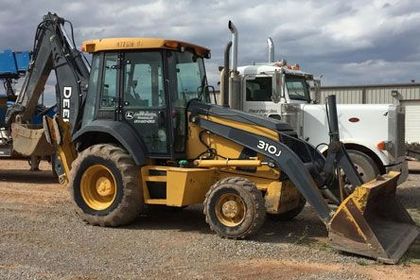Everything About Oil Field Equipment and Pipeline Equipment: Key Insights and Necessary Information
Oil field equipment and pipeline systems play a critical duty in the oil and gas industry. They are crucial for the reliable extraction and transportation of hydrocarbons. Key parts, such as piercing rigs and tank, straight effect functional success. Meanwhile, developments in technology promise to boost safety and efficiency. Recognizing these aspects is essential for any individual associated with or thinking about this complex field, as it establishes the phase for deeper expedition of industry methods.

Summary of Oil Field Equipment
As the demand for oil remains to expand, understanding the tools made use of in oil areas comes to be progressively important. Oil field equipment incorporates a large range of machinery and devices vital for exploration, extraction, and processing. Key elements consist of drilling rigs, which are critical for reaching oil tanks, and manufacturing equipment, such as separators and pumps, that assist in the removal process. Superior Oilfield Rentals. Additionally, tank play a significant role in holding petroleum before transportation. Security tools, consisting of blowout preventers and stress gauges, ensures functional safety and performance. Each tool features cohesively to enhance production and keep efficient operations. Experience with this tools is necessary for experts in the market to guarantee successful procedures and adherence to safety and security criteria
Kinds of Drilling Rigs and Their Applications
Drilling rigs work as the backbone of oil extraction procedures, with numerous types made for details geological problems and functional requirements. One of the most common types include rotating drilling rigs, which use a rotating drill bit to permeate the earth, and cable device rigs, recognized for their percussion drilling method. For offshore operations, jack-up rigs and semi-submersible rigs provide security and support in marine environments. Additionally, directional drilling rigs allow drivers to drill at angles, getting to deposits that are not up and down accessible. Each rig type has special benefits, enhancing effectiveness and security based upon the drilling atmosphere. Selecting the ideal rig is crucial for taking full advantage of source removal while lessening environmental effect and functional costs.

Essential Pipeline Equipment and Their Functions
Pipeline facilities is essential for the transport of oil and gas from extraction websites to processing facilities and end-users. Various essential tools components facilitate this procedure. Pipes themselves work as the primary channels, developed to endure high stress and harsh compounds. Pump stations are essential for keeping circulation by enhancing stress along the pipeline. Valves official source play an essential role in managing circulation and separating sections for upkeep. Additionally, installations and connectors assure safe and secure joints in between pipe areas. Keeping track of systems, consisting of flow meters and stress sensing units, are crucial for identifying leaks and optimizing circulation rates. Finally, pigging tools is used for upkeep and cleansing, protecting pipeline stability and effectiveness. With each other, these elements form the backbone of a reliable pipeline system.
Advancements and Technologies in Oil and Gas Equipment

Security and Maintenance Practices in the Oil Market
While the oil industry has actually made substantial strides in technology and performance, the significance of durable safety and security and maintenance techniques can not be overemphasized. Effective security protocols are important to shield employees and the environment, minimizing the threat of accidents and spills. Normal inspections and maintenance of equipment aid identify potential problems prior to they rise, making certain functional integrity. Training programs for employees are important, highlighting the significance of safety recognition and emergency situation response procedures. Furthermore, adherence to industry guidelines and standards promotes a society of safety. Implementing sophisticated surveillance technologies can further boost maintenance techniques, permitting real-time evaluations of tools problems. Ultimately, focusing on safety and security and upkeep is important to the sustainability and success of the oil market.
Regularly Asked Questions
What Are the Environmental Influences of Oil Field Equipment?
The ecological effects of oil field equipment consist of environment go now destruction, water contamination, and air contamination (Superior Oilfield Rentals). In addition, equipment breakdown can cause spills, adversely influencing wildlife and environments, highlighting the demand for stringent regulations and monitoring
How Is Oil Field Equipment Delivered to Remote Locations?
Carrying oil field equipment to remote places commonly includes specific cars, helicopters, or barges. Logistics firms coordinate paths, guaranteeing devices gets here safely and effectively, thinking about terrain and ease of access to minimize hold-ups and make best use of performance.
What Regulative Specifications Govern Oil Field Equipment?
Regulative requirements regulating oil field equipment mostly include safety and security, environmental management, and functional performance standards. Agencies such as OSHA and EPA apply these laws to ensure risk-free methods and lessen ecological influence in oil extraction procedures.
What Skills Are Required to Run Oil Area Equipment?

Exactly How Do Oil Costs Impact Equipment Demand and Usage?
Oil costs greatly affect devices need and usage. Higher prices usually result in boosted exploration and production tasks, driving demand for machinery. Alternatively, lower costs might result in lowered procedures and lowered need for tools.